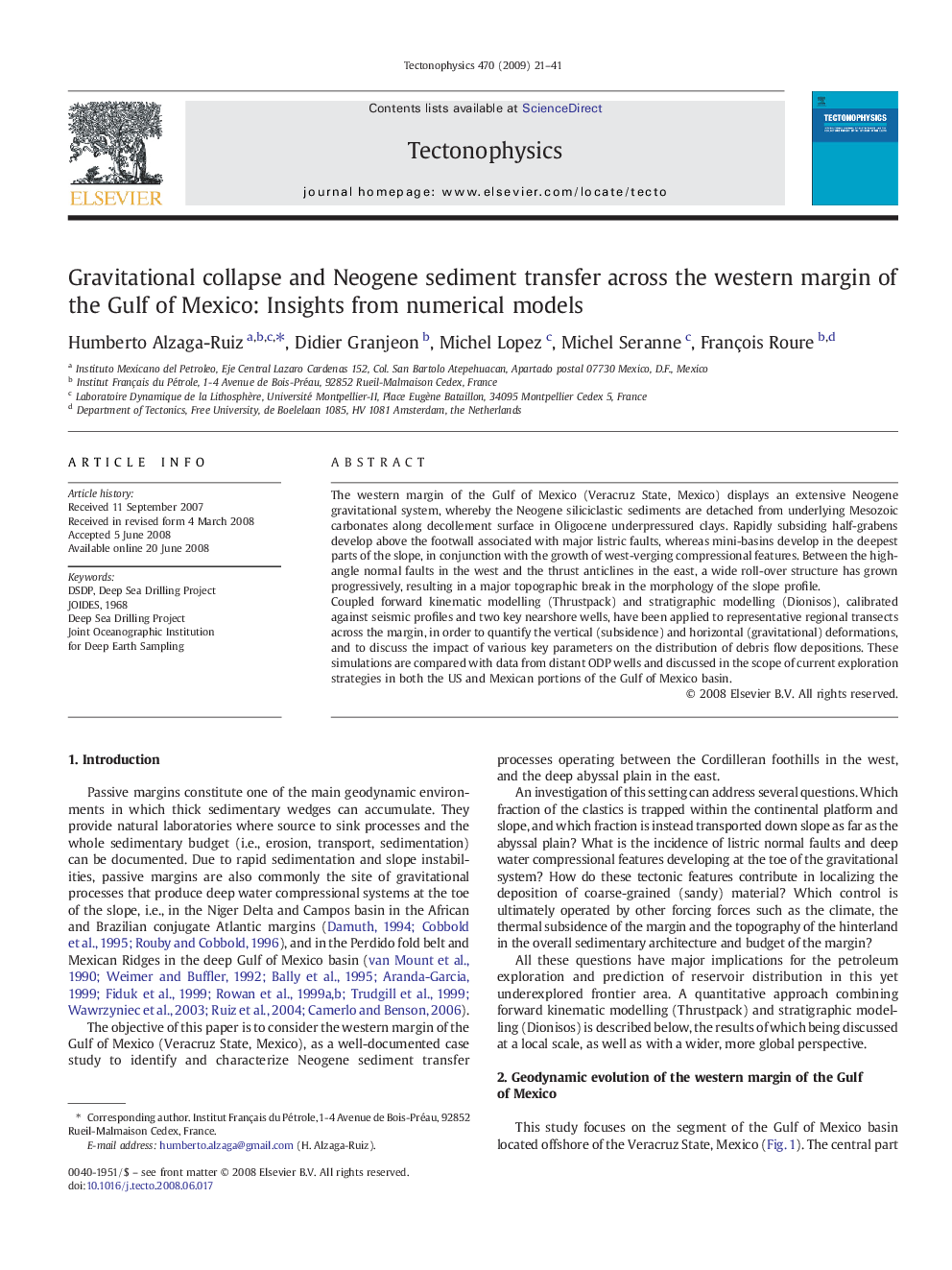| Article ID | Journal | Published Year | Pages | File Type |
|---|---|---|---|---|
| 4694207 | Tectonophysics | 2009 | 21 Pages |
The western margin of the Gulf of Mexico (Veracruz State, Mexico) displays an extensive Neogene gravitational system, whereby the Neogene siliciclastic sediments are detached from underlying Mesozoic carbonates along decollement surface in Oligocene underpressured clays. Rapidly subsiding half-grabens develop above the footwall associated with major listric faults, whereas mini-basins develop in the deepest parts of the slope, in conjunction with the growth of west-verging compressional features. Between the high-angle normal faults in the west and the thrust anticlines in the east, a wide roll-over structure has grown progressively, resulting in a major topographic break in the morphology of the slope profile.Coupled forward kinematic modelling (Thrustpack) and stratigraphic modelling (Dionisos), calibrated against seismic profiles and two key nearshore wells, have been applied to representative regional transects across the margin, in order to quantify the vertical (subsidence) and horizontal (gravitational) deformations, and to discuss the impact of various key parameters on the distribution of debris flow depositions. These simulations are compared with data from distant ODP wells and discussed in the scope of current exploration strategies in both the US and Mexican portions of the Gulf of Mexico basin.
